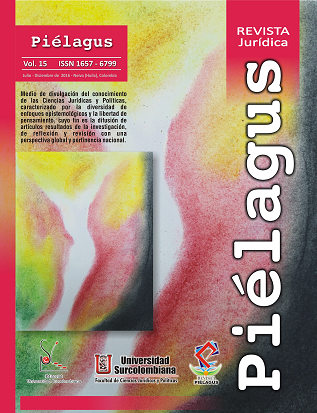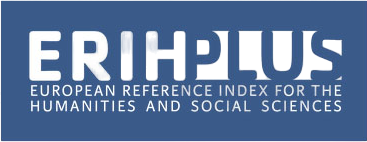Genetic determinism, genocracy, multiculturalism, sexual diversity and new rights: a look around creation of homosexual families
##plugins.themes.bootstrap3.article.main##
Once it is presented the alternative of creation of a family by people of the same sex and different sexual diversity, gender orientations and identities according to the assisted human conception techniques, there is the possibility of genetically determine the desirable characteristics of human beings. What is pretend is to bring to their affective alliances and thus build the homosexual family of desire with the genotype and phenotype that corresponds to the ideal prototype of the social acceptance standards.
However, these issues create problems to bioethics and turn on the biolaw alarms facing the intention of create children with advances in bioscience, where prima facie stands surrogacy maternity between gays, lesbians, bisexuals, transsexuals, transgender, and intersex. All of them could organize trios and polyamorous groups where maternity and paternity is extended to members of the same groups and therefore there are new filial rights for the unborn within the paradigms of multiculturalism in the global society.
Downloads
##plugins.themes.bootstrap3.article.details##
·Bao, A-M, Swaab, DF. (2011). Sexual differentiation of the human brain: Relation to gender identity, sexual orientation and neuropsychiatric disorders. Frontiers in Neuroendocrinology; pp. 32:214-226.
·Celis, LG. (2011). Las Ciencias Biomédicas del Siglo XXI. Crítica al determinismo genético. Nova; pp. 9(16):122-123.
·Decreto 149 de 2012 del 4 de Abril, Por medio del cual se modifica la estructura organizacional de la Secretaría Distrital de Integración Social. Disponible en http://www.alcaldiabogota.gov.co/sisjur/normas/
Norma1.jsp?i=46794.
·De Vries, GJ y Södersten, P. (2009). Sex differences in the brain: The relation between structure and function. Hormones and Behavior; pp. 55:589-596.
·Del Barco, JL. (1998). Bioética de la Persona Humana. Universidad de La Sabana: Chía.
·Delgado Castro, Á. (2004). La adopción por Homosexuales: Universidad de Navarra. Disponible en www.unav.edu/departamento/civil/files/file/civil/castro_adopcion.pdf
·El Tiempo. (2015). Corte limita adopción gay a que uno de la pareja sea padre biológico. Disponible en http://www.eltiempo.com/politica/justicia/corte-diceno-a-adopcion-de-ninos-por-parejas-gay-/15268396
·Finkielstain, GP, Kim, MS, Sinali N, Nishitani M, Van Ryzin C, Hill SC, Reynolds JC, Hanna RM y Merke DP. (2012). Clinical characteristics of a cohort of 244 patientes with congenital adrenal hyperplasia. J Clin
Endocrino Metb; 97(12):4429-4438.
·Kac, E. (2005). Telepresence and Bio Art -Networking Humans, Rabbits and Robots. Ann Arbor: University of Michigan Press.
·Kulshreshtha, B, Eunice, M, Ammini AC. (2012). Pubertal development among girls with classical congenital adrenal hyperplasia initiated on treatment at different ages. Indian J Endocrinal Metab. 16(4):599–603.
·LeVay, S.A (1991). Difference in hypothalamic structure between heterosexual and homosexual men. Science; 253: 1034-1037.
·Hamer, DH, Hu, S, Magnuson VL, Hu N, Pattatucci AML. (1993). A Linkage between DNA. Markers on the X chromosome and Male Sexual Orientation. Science; 261: 321-327.
·Hines, M. (2010). Sex-related variation in human behavior and the brain. Trends in Cognitive Sciences: 14(10): 448-456.
·Monroy, J. (2013). Técnicas de reproducción asistida y su incidencia en Colombia. Verba Iuris, 30, 135-150.·Online Mendelina Inheritance in Man (OMIM). An Online Catalog of Human Genes and Genetic Disorders Updated 5 June 2014. Disponible en http://www.omim.org/search?index=entry&sort=score+desc%2C+prefix_sort+desc&start=1&limit=10&search=OMIM+306995+.
·Rahman, Q. (2005). The neurodevelopment of human sexual differentiation. Neuroscience and Biobehavioral Review; 29:1057-1066.
·Ric, G, Anderson, C, Risch, N, Ebers G. (1999). Male Homosexuality: Absence of Linkage to Microsatellite Markers at Xq28. Science; 284 (5414) : 665-667.
·Roselli, ChE, Larkynn, K, Schurunk, JM. (2004). Sexual partner preference, hypothalamic morphology and aromatase in rams. Physiology & Behavior; 83:233-245.
·Samper, P. (1991). La fecundación asistida en Colombia: realidad y norma. Disponible en :https://derechoprivado.uniandes.edu.co/components/com_revista/archivos/derechoprivado/pri378.pdf
·Sanz, J. (2014). La adopción homosexual y la fecundación asistida. Disponible en http://www.lapatria.com/columnas/110601/la-adopcion-homosexual-y-la-fecundacion-asistida
·Semana. (2014). La pareja que logró un histórico fallo para adoptar. Disponible en http://www.semana.com/nacion/articulo/la-pareja-de-lesbianas-quegano-tutela-para-adoptar/400753-3
·Viedma, I. (2002). Proyecto Genoma Humano. Implicaciones Éticas. Persona y Bioética; 6 (7):73-84.
·Watson, JD y Crick, FHC. (1953). Molecular Structure of Nucleic Acids. A Structure for Deoxyribose Nuclei Acid. Nature; 171(4356):737-738.
·Zárate, A. (2014). Biomedicina y biotecnología ante la violencia prenatal. Legislación comparada con el derecho español. Bogotá, Colombia: Ediciones de la U- Lid Editorial.
·Zárate, A (2015) Programa Veredicto. T. V. “Decisión de la Corte Constitucional sobre adopción igualitaria”. 23 de noviembre de 2015.
·Zaraté, A. Celis, LG. (2015). Implicaciones Bioéticas derivadas de las parejas del mismo sexo a las tecnologías provenientes de la Biomedicina y la Biotecnología, para la conformación de las familias
Homoparentales. Persona y Bioética; 19(1):48-63.

















